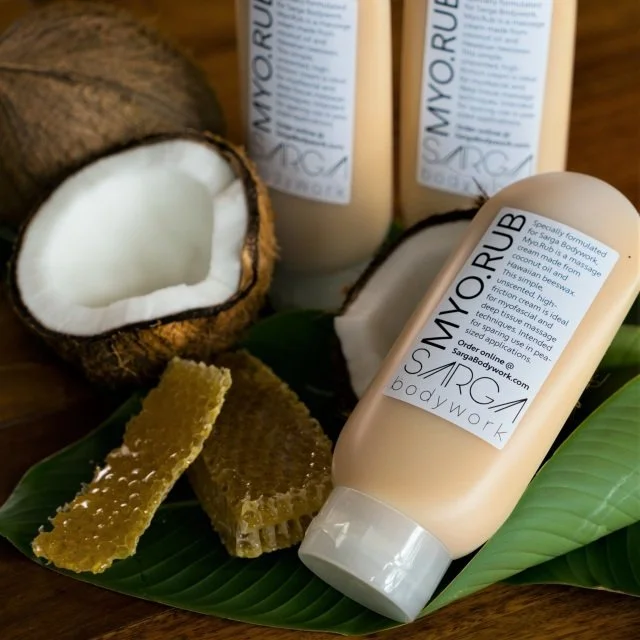modalities
-

Swedish & Relaxation
Swedish techniques include gliding and kneading strokes, combined with compression, rocking, and friction to bring more relaxation and ease to our tissues.
FAQ: "Do you offer "deep tissue" massage?"
The answer is: it depends what you mean by "deep tissue." Deep tissue massage is different for every body. Often firm pressure can cause your body to brace and tense up, thus being counterproductive to tissue relaxation. How firm pressure is applied is very important - I use very firm pressure discerningly and slowly so that your body can adapt, respond, and shift in response to the pressure & the pain response can be lessened.
Remember, it doesn’t need to hurt to work.
-

Sarga Bodywork
Sarga Bodywork the broad surface of the practitioners foot to deliver slow deep-tissue to engage the myofascial system.
“Feet are amazing manual therapy tools, and as bodyworkers, the ability to perform massage with our feet opens up a whole new set of biomechanical options. Barefoot massage is an ancient practice, most notably in parts of Asia and the Pacific, and this practice encompasses manual therapy techniques that are applied to recipients' bodies with the practitioner's bare feet. These techniques often mimic massage techniques applied with therapists' hands, however a notable difference is that barefoot massage techniques are less "pointed" and have the ability to deliver deeper, more consistent pressure due to the broader contact surface area of therapists' feet and the gravitational force that can be accessed for the delivery of the techniques.”
- Sarga Bodywork
-

Hot Stones
Hot stones help relax tense tissues, work into deeper muscles, and cultivate relaxation.
Stones are heated to 125-135 degrees and used to apply medium and firm pressure. The targeted heat of the stones, as well as their added weight for applying pressure, makes them an excellent tool for tense areas.
-

Cupping
While a lot of massage techniques utilize downward pressure on the tissues, cupping uses “negative pressure” or suction. Additionally, cupping is a novel stimulation for our nervous system, helping to aid in the release of chronic tension.
Sometimes cupping may feel like a gentle hug from an octopus, sometimes more like if your vacuum hose got stuck on your skin, but the intensity is adjustable and adaptable to find the right level for you. Jae communicates throughout the process to ensure your comfort.
Depending on your goals for your session, cupping can be involved during your whole treatment, for one or two areas of your body, or not at all.
Learn more about cupping here.
-

Myofascial
Our fascia creates a continuous web throughout our bodies. The tissues that make up our fascia respond more slowly to touch, so myofascial work is slower and more sustained in order to work with these connective tissue fibers and guide them to change
Working with the fascia can have body-wide benefits and increase relaxation. The pace of this work can also be very soothing to the nervous system.
-

Stretching
Assisted stretching is helpful to integrate all the work during a massage therapy session.
I will gently cue your breathing and communicate to find a safe and effective level of stretch.
-

Lymphatic Drainage
Helps to stimulate and support the lymphatic system, especially with mild swelling or edema and in injury recovery.
Lymphatic drainage involves light, rhythmic strokes that are calming and “downregulating” to our systems.
lotions & oils







